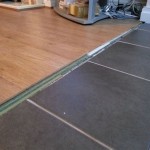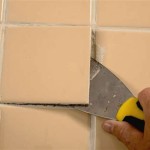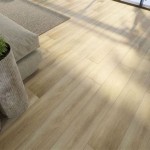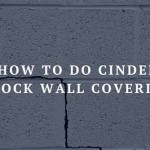How To Remove Hard Water Stains From Tile Floors In Showers
Hard water, characterized by a high concentration of minerals such as calcium and magnesium, is a common issue affecting households globally. When hard water evaporates, it leaves behind unsightly deposits on surfaces, particularly on tile floors within showers. These deposits, commonly known as hard water stains, can diminish the aesthetic appeal of the shower and, if left untreated, become increasingly difficult to remove. Addressing these stains promptly and effectively is crucial for maintaining a clean and hygienic bathroom environment. This article provides a comprehensive guide to removing hard water stains from tile floors in showers, encompassing various methods and preventive measures.
The composition of hard water stains generally includes calcium carbonate, magnesium hydroxide, and other trace minerals. These minerals adhere strongly to the porous surface of tile and grout, making them resistant to conventional cleaning methods. The appearance of hard water stains can vary from a white, chalky residue to a more stubborn, yellowish build-up, depending on the severity of the water hardness and the duration of exposure. Moreover, the stains tend to be more prominent in areas prone to frequent water contact, such as around the shower drain and along the base of the shower walls.
Before embarking on any cleaning process, it is essential to identify the type of tile present in the shower. Different tile materials possess varying levels of porosity and react differently to cleaning agents. Common tile types include ceramic, porcelain, natural stone (such as marble and granite), and glass. Ceramic and porcelain tiles are generally durable and resistant to chemical damage, while natural stone tiles are more susceptible to etching and staining and require gentler cleaning solutions. Glass tiles, though relatively non-porous, can still accumulate hard water stains and necessitate careful cleaning to avoid scratching.
Safety precautions are paramount when handling cleaning agents, especially those containing acidic or alkaline substances. Always wear rubber gloves to protect the skin from irritation or chemical burns. Adequate ventilation is crucial to prevent inhalation of fumes; opening windows or using a ventilation fan is recommended. Eye protection, such as safety goggles, is advisable to safeguard against accidental splashes. Furthermore, it is imperative to keep cleaning products out of reach of children and pets.
1. Utilizing Vinegar as a Cleaning Agent
Vinegar, specifically white distilled vinegar, is a readily available and effective natural cleaning agent for removing hard water stains. Its mild acidity helps dissolve mineral deposits without causing significant damage to most tile surfaces. However, it is crucial to exercise caution when using vinegar on natural stone tiles, as prolonged exposure can potentially etch or dull the finish. A diluted solution of vinegar is generally recommended for natural stone.
To prepare a vinegar solution, mix equal parts white distilled vinegar and warm water in a spray bottle. For more stubborn stains, the concentration of vinegar can be increased. Spray the solution liberally onto the affected areas of the tile floor and allow it to dwell for approximately 15 to 30 minutes. This dwell time allows the vinegar to penetrate and loosen the mineral deposits. After the dwell time, scrub the area vigorously with a non-abrasive scrub brush or sponge. Avoid using abrasive materials such as steel wool, as they can scratch the tile surface.
Following scrubbing, rinse the tile floor thoroughly with clean water to remove any remaining vinegar residue and dissolved mineral deposits. Use a squeegee or clean cloth to dry the surface completely, preventing water spots from forming. Repeat the process as needed for persistent stains. For grout lines, a grout brush can be used in conjunction with the vinegar solution to effectively remove stains and mildew.
For particularly stubborn hard water stains, consider using a vinegar-soaked cloth. Saturate a clean cloth with undiluted white distilled vinegar and place it directly over the stained area. Allow the cloth to remain in place for several hours, or even overnight, to maximize the dissolving action of the vinegar. Afterward, remove the cloth, scrub the area, and rinse thoroughly.
2. Employing Baking Soda Paste for Stain Removal
Baking soda, also known as sodium bicarbonate, is a mild abrasive and deodorizer that can be used effectively to remove hard water stains without causing significant damage to tile surfaces. It is particularly suitable for tackling stains on ceramic, porcelain, and glass tiles. However, as with vinegar, caution is advised when using baking soda on natural stone tiles, as excessive scrubbing can potentially scratch the surface.
To create a baking soda paste, mix baking soda with water to form a thick, spreadable consistency. The ratio of baking soda to water may vary depending on the desired consistency, but a general guideline is to start with equal parts and adjust as needed. Apply the paste liberally to the hard water stains on the tile floor. Allow the paste to dwell for approximately 30 minutes to an hour, giving the baking soda time to loosen the mineral deposits.
After the dwell time, scrub the area gently with a non-abrasive scrub brush or sponge. Use circular motions to effectively lift the stains from the tile surface. For grout lines, a grout brush can be used to scrub away any remaining stains and debris. Rinse the tile floor thoroughly with clean water to remove all traces of baking soda paste and dissolved mineral deposits. Dry the surface completely with a squeegee or clean cloth.
Combining baking soda and vinegar can create a powerful cleaning action. After applying the baking soda paste, spray a small amount of vinegar onto the paste. The resulting fizzing action helps to further dislodge mineral deposits. Allow the mixture to fizz for a few minutes, then scrub and rinse as described above. However, it is important to note that this combination can produce carbon dioxide gas, so ensure adequate ventilation in the shower area.
3. Using Commercial Hard Water Stain Removers
Numerous commercial hard water stain removers are available on the market, formulated specifically to dissolve mineral deposits and restore the shine of tile surfaces. These products often contain stronger acids or chelating agents than vinegar and baking soda, making them more effective for removing stubborn or long-standing stains. However, it is crucial to select a product that is compatible with the type of tile in the shower and to follow the manufacturer's instructions carefully.
When choosing a commercial hard water stain remover, consider the ingredients and their potential impact on the tile surface. Avoid products containing harsh chemicals such as bleach or ammonia, as these can damage or discolor certain types of tile, particularly natural stone. Opt for products that are specifically labeled as safe for use on tile and grout. Read the product label carefully to ensure that it is suitable for the specific type of tile in the shower.
Before applying any commercial hard water stain remover to the entire tile floor, it is advisable to test it on a small, inconspicuous area to assess its impact on the tile's color and finish. Apply a small amount of the product to the test area and allow it to dwell for the recommended time, then rinse and dry the area. If there are no adverse effects, proceed with applying the product to the rest of the tile floor.
Follow the manufacturer's instructions for application and dwell time. Typically, the product is sprayed or applied directly to the stained areas and allowed to dwell for a specified period, usually ranging from a few minutes to half an hour. After the dwell time, scrub the area with a non-abrasive scrub brush or sponge, then rinse thoroughly with clean water. Dry the surface completely to prevent water spots. Always wear appropriate safety gear, including gloves and eye protection, when using commercial cleaning products.
After removing hard water stains, implementing preventive measures is crucial to minimize their recurrence. Regularly wiping down the shower walls and floor after each use can significantly reduce the build-up of mineral deposits. Installing a water softener can effectively reduce the mineral content of the water supply, thereby diminishing the formation of hard water stains. Routinely cleaning the shower with a mild detergent or vinegar solution can also help prevent stains from becoming deeply ingrained.
Maintaining the shower's ventilation system is also important. Adequate ventilation helps to reduce humidity levels, which can contribute to the formation of hard water stains. Ensure that the shower's ventilation fan is functioning properly and use it during and after each shower. Consider leaving the shower door or curtain slightly open to allow for better air circulation. By combining effective cleaning methods with proactive preventive measures, it is possible to maintain a clean and stain-free tile floor in the shower for years to come.

Stone Pro How To Remove Hard Water Spots In Showers

Shower Cleaning Makeover Removing Limescale From Glass Door And Grout Tiles

Clean Hard Water Stains Tile Using White Vinegar Askthebuilder Com

How To Remove Hard Water Stains Chet S Cleaning

How To Remove Hard Water Stain From Tile And Grout

3 Best Ways To Get Rid Of Hard Water Stains From Bathroom Tiles Kent

How To Get Rid Of White Stains On Bathroom Tiles Elite

Removing Rust And Hard Water Stains From A Shower With Travertine Tiles Stone No Scrubbing

How To Remove Hard Water Stains From Tiles Myhomeware Blog

How To Get Rid Of White Stains On Bathroom Tiles Elite
Related Posts








